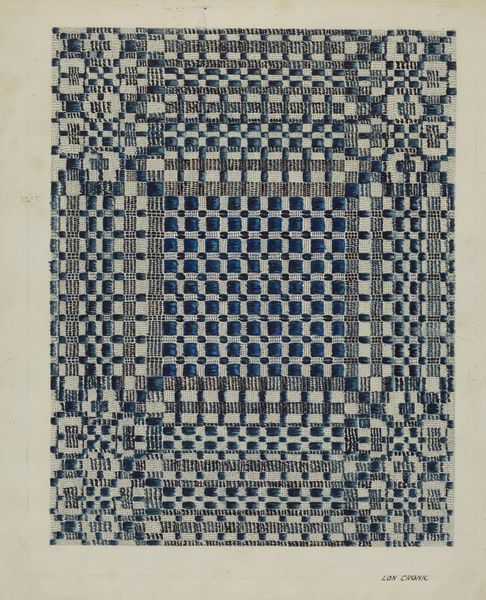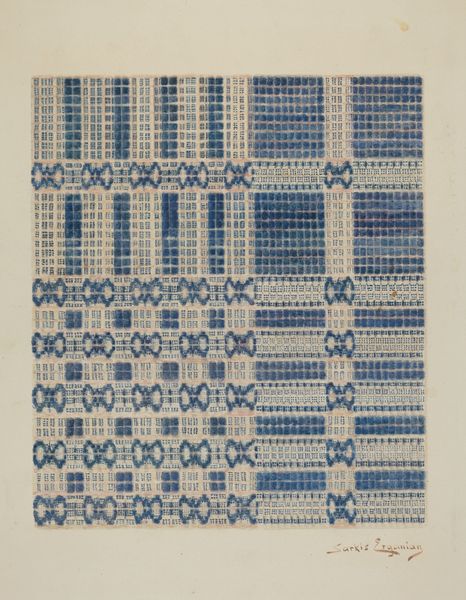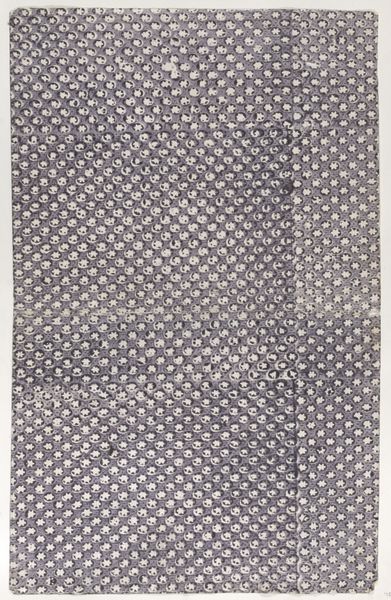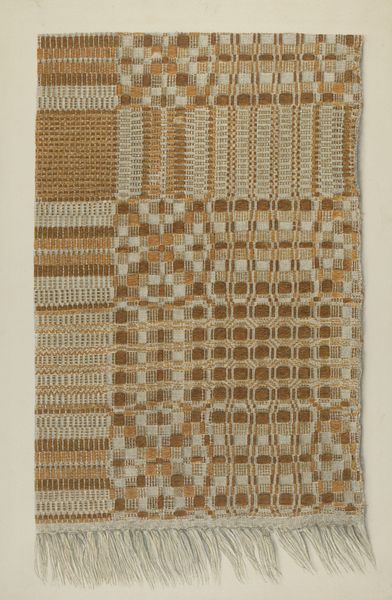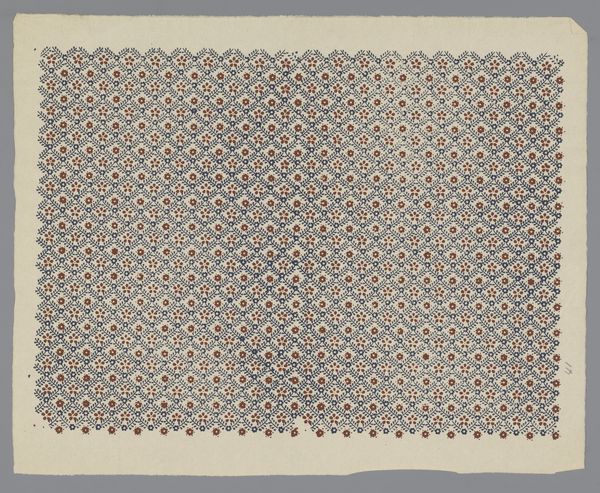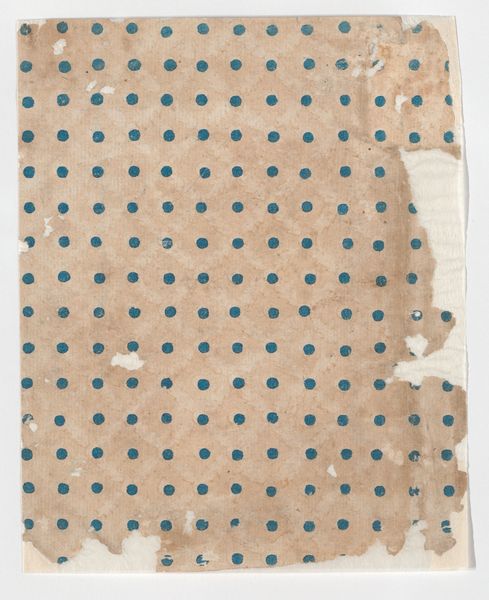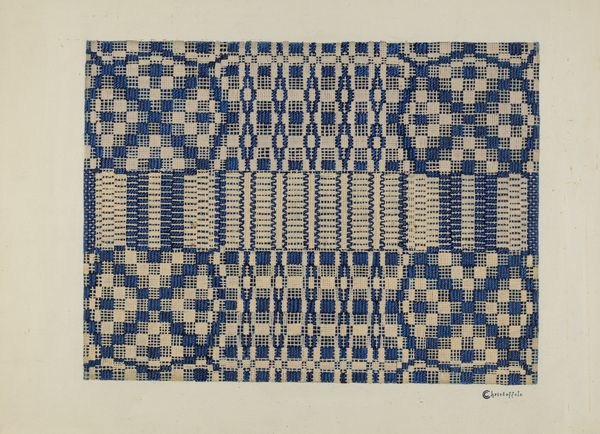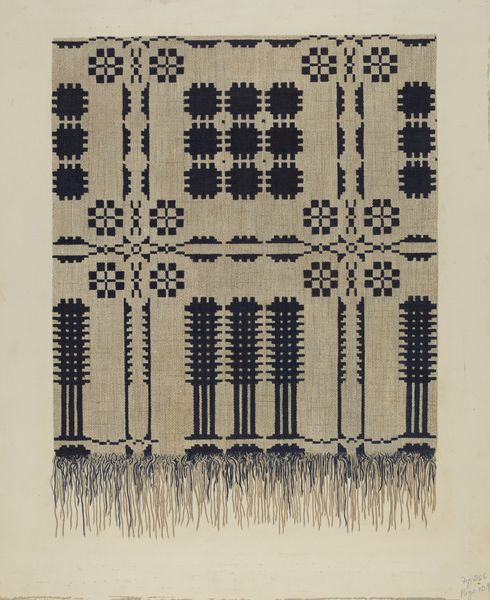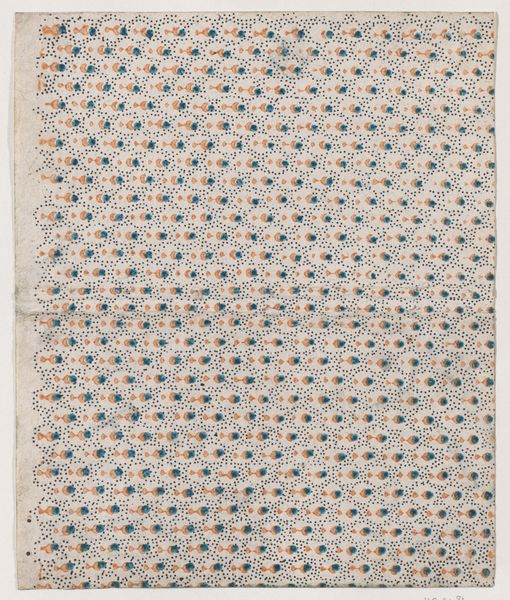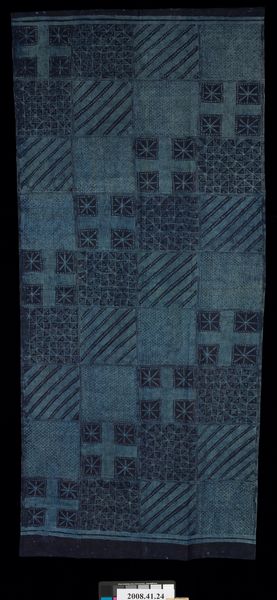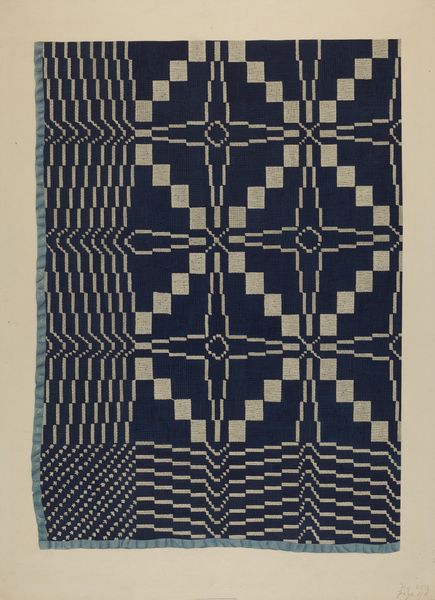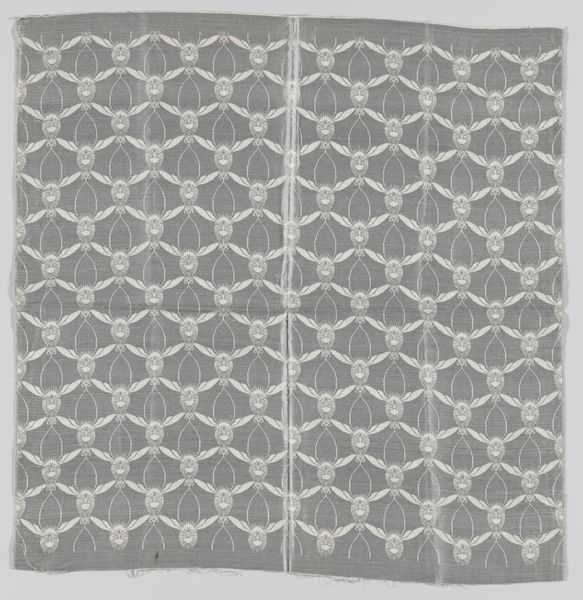
drawing, textile
#
drawing
#
natural stone pattern
#
pattern
#
textile
#
geometric pattern
#
abstract pattern
#
repetitive shape and pattern
#
organic pattern
#
geometric
#
repetition of pattern
#
pattern repetition
#
imprinted textile
#
layered pattern
#
organic texture
Dimensions: overall: 35.5 x 27.7 cm (14 x 10 7/8 in.) Original IAD Object: 86" wide; 73" high
Copyright: National Gallery of Art: CC0 1.0
Editor: This is a drawing for a Coverlet, made around 1938 by Magnus S. Fossum. It's incredible to think this level of detail comes from a drawing of textile, the blue and white grids seem almost dizzying. What stands out to you? Curator: Immediately, I see echoes of older weaving traditions, a kind of visual memory encoded in the pattern itself. Think of quilts, samplers…these weren’t just functional objects, but ways of preserving stories, of marking cultural identity. Do you see how the repeated geometric motifs create almost a language? Editor: Yes, there’s definitely a rhythm to it, but what kind of stories would you say this coverlet is telling? Curator: It's hard to say definitively without knowing Fossum's background intimately, but the very act of choosing these specific patterns—squares within squares, diamond shapes—points to a connection with a shared visual heritage. Perhaps these were common motifs in his community. Have you ever considered that a simple shape, repeated enough times, can become a powerful symbol? Editor: That’s a fascinating thought. Like a code passed down through generations. So, it’s not just the visual appeal but also the potential embedded meaning we should be considering? Curator: Exactly. And even the limited color palette, the stark contrast between the blue and white, adds to that sense of almost formalized communication. Is there something almost official about it? Editor: I hadn't thought about it that way, but I see what you mean. I came in thinking about the geometric aspect, but there’s history woven in too. Curator: Every choice the artist makes, consciously or unconsciously, contributes to the story. By recognizing symbols and repetition of symbols we start seeing the emotional or psychological reasons for these particular combinations. Editor: This has completely changed how I see the Coverlet; thanks for broadening my perspective.
Comments
No comments
Be the first to comment and join the conversation on the ultimate creative platform.
